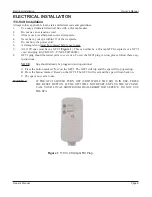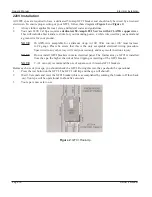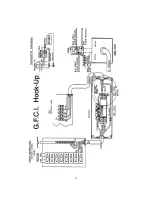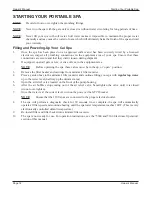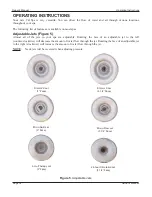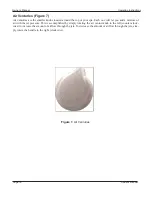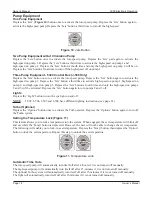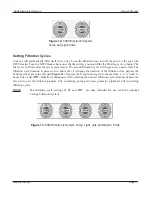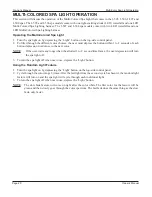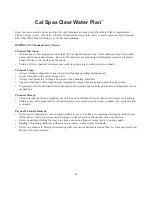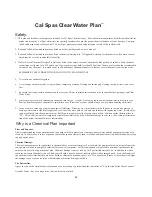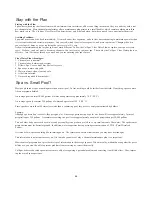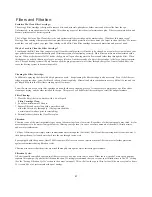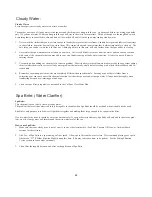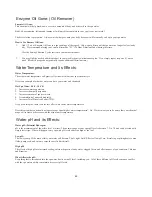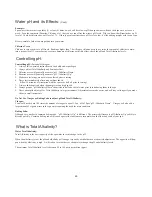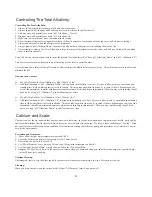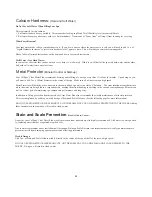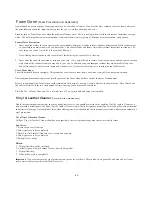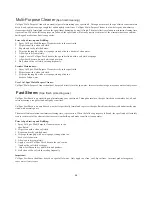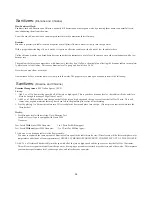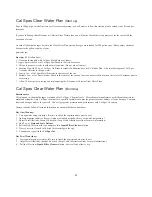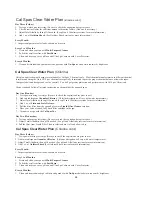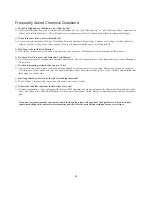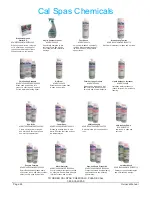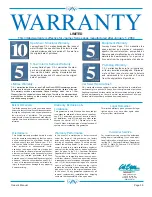
Stay with the Plan
Staying with the Plan:
Spa owners who enjoy the cleanest water with a minimum time investment, all have one thing in common: they use, and stay with a sim-
ple chemical plan. Most chemical manufactures offer a maintenance plan printed in a small booklet, which contains nothing more than
how much to use. The Cal Spas’ Clear Water Plan describes not only what and when, but why you need to use a particular chemical.
Avoiding Problems:
Spa water issues cannot be fixed immediately. It is much easier, less expensive, and a lot less time consuming to maintain spa water, than
it is to troubleshoot and correct water issues. Ask yourself, which is easier, less expensive, and more convenient? Changing the oil in
your car four (4) times a year, or replacing the car every two (2) years.
A chemical maintenance plan for your spa is not much different. Follow the Cal Spas’ Clear Water Plan, or replace your spa every two
years. We know you don’t want to become a chemists. You just to enjoy your new spa. That is why the Cal Spas’ Clear Water plan is so
effective. Just 15 minutes, three days a week and you are ensuring your spa’s future.
Clear Water Plan Advantages:
1. Chemical use is minimal.
2. Chemical odor is almost non-existent.
3. Pillows, Spa Covers, and Filter lids last for years.
4. Spa usage is more enjoyable.
5. Water is always clean, clear and safe.
6. Little time invested.
7. No smock required (Chemist Joke).
Spa vs. Small Pool?
Most people think of spas as nothing more than a small pool. In fact, nothing could be further from the truth. If anything, spas are more
like an overgrown bathtub.
An average pool contains 30,000 gallons of water and operates at approximately 70˚ F (20˚ C).
An average spa only contains 350 gallons of water and operates at 100˚ F (38˚ C).
Since spas have more than 100 times less water than a swimming pool, they are very easily contaminated by bathers.
Example:
Although spa users don’t realize it, they perspire a lot. An average person using a spa for one hour will leave approximately 3 pints of
perspiration per 350 gallons. A swimmer exercising in a pool leaves approximately one pint of perspiration per 30,000 gallons.
This and other body waste such as skin, oil, and personal hygiene products are left in a very small amount of hot water. The spa becomes
prime environment for bacterial growth. In addition, water evaporates leaving a stronger concentration of T.D.S. (Total Dissolved
Solids).
As stated before, spas are nothing like swimming pools. The former needs more attention than you may have first thought.
This information is not meant to scare you. It is to make you aware of why a chemical maintenance plan is so important.
Most chemical programs don’t provide this type of information to the average spa user. When in reality, without knowing what the possi-
bilities are, you won’t be able to prevent problems from occurring or correct them easily.
Cal Spas believes educated spa owners are more able of recognizing a potential problem and correcting it with little effort. Thus, improv-
ing the overall spa experience.
46
Summary of Contents for 1100 Electronic Series
Page 12: ...10 ...
Page 78: ...10 ...
Page 118: ...10 ...
Page 161: ...Owner s Manual Page 11 Electrical Installation Owner s Manual Figure 3 GFCI Hook Up ...
Page 219: ...Owner s Manual Page 11 Electrical Installation Owner s Manual Figure 3 GFCI Hook Up ...
Page 282: ...Owner s Manual Page 11 Electrical Installation Owner s Manual Figure 3 GFCI Hook Up ...

